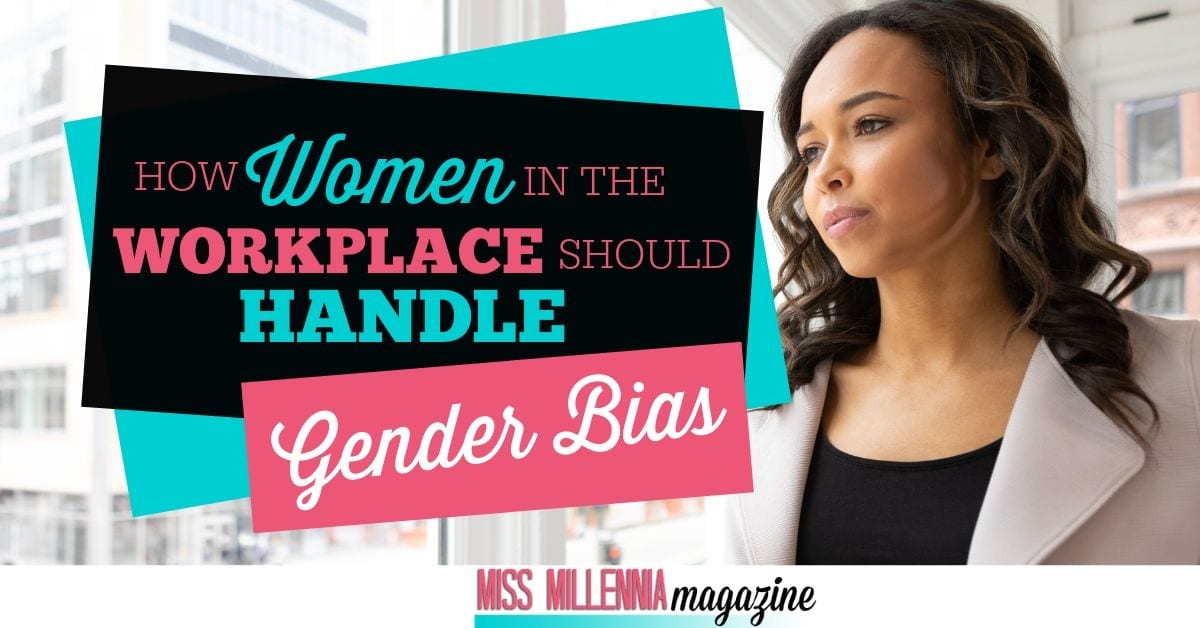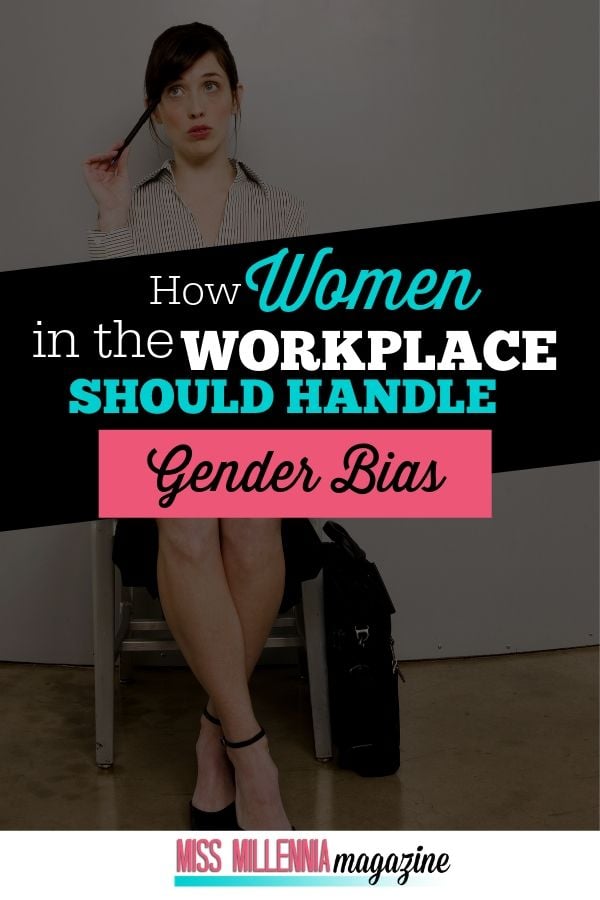How Women in The Workplace Should Handle Gender Bias

Forté sponsors this post. All opinions are 100% my own!
When you are a woman of color working in a corporate environment, you may face challenges that your white male counterparts will not experience.
Here’s what I’ve experienced over the last eight years of my career:
- A male coworker ran their fingers through my hair and told me how much they liked it without my permission.
- I have been mansplained to more times than I care to recount.
- I have been called “baby” by a male coworker before (yes, in the office).
- I’ve been asked by a colleague, “What is your real hair?”
- Speaking of hair, I’ve also been told I could not wear my hair curly (its natural texture) at work since it isn’t considered “professional”
- I have most definitely felt like I was being held to a higher standard or treated differently because of my gender or race.
- I’ve been the only woman in a meeting room and the only woman (and person) of color) in an organization
The truth is it’s complicated being a woman and working in an environment with a majority of men. Women who work in these environments know that racial and gender bias isn’t always overt, so it can be hard to pinpoint exactly why a situation feels wrong—especially if you’re experiencing it for the first time.
I have now learned how to navigate these waters more smoothly (although not perfectly). If you experience some bias in the workplace, follow my tips and tactics below to handle it.
1. Keep Your Cool
First and foremost, you have to keep your cool.
The last thing you want to do is react. This cannot be easy in the heat of the moment; believe me, I know! But it is so necessary. Depending on the offender, they may have the power to fire you, reprimand you, or, at the very least, report you to HR. So staying calm is essential.
If someone does or says something to me that I believe may involve bigotry of some sort, I write it down just as I take any other notes during the day. I do not seek vengeance or anything on that person, but I do want to have a record of what happened so I can make sense of it—which leads me to the next step.
2. Assess The Situation
When you get a minute alone, reflect and assess the situation. I’ve realized that my emotions let me know if something seems awry long before I can logically reason why I feel a certain way. So, I make sure to take time to break down the situation.
Sometimes it’s me. I was in a mood, misread something, or completely misjudged a situation.
There are also other times when I break down a comment and decipher its meaning. I consider these questions when assessing: “Why would they say that?” Who was it directed towards? Why did I become upset about this comment?”
I know these sound like very basic questions, but sometimes, this simple task is enough to break down the complexity of gender and racial bias. It is time to get some advice once you conclude how you feel about it.
3. Get Advice From Other Women in the Workplace
This is my favorite step personally because this is when you can finally get the validation and perspective you need. It is always nice to get the opinion of someone outside of the organization you work for, preferably someone who also understands the complexities of gender and racial bias in their own career.
In this regard, I feel most comfortable speaking to other professional women and people of color. Talking to my sisters about their work experiences helps me make sense of what I’ve experienced.
But not everyone has a team of sisters to turn to for advice. So where do other people go?
My suggestion is Forté. I love the concept of Forté. They have a number of resources for women who are trying to transcend in their careers. Signing up for their free membership allows you to join a community of 100,000 women committed to gender equity through Forté’s programs. No matter where you are in your career, from college to CEO, you’ll find events, especially for you as you build your network of like-minded women.
Their Forté Connect program allows you to connect with other career-driven women. So you can chat with other women who “get it” and work against challenges similar to yours in the workplace. If you want to get the men in your organization to help prevent gender bias at work, check out their Men As Allies program, which provides resources, tools, inspiration, and instruction for getting men to engage in the gender equity conversation.
While these features alone are enough reasons to join their free membership, they have several other resources—see the list below.
- Forté showcases the endless career options available in business through its hands-on, experiential programs and resources
- Forté supports women throughout the MBA process—from consideration to graduation—helping them maximize their MBA experience.
- Forté provides women at all stages of their careers with skill-building workshops and job center access.
- Forté introduces its audience to top business schools, leading companies, and like-minded peers.
- Forté motivates women through role models who speak at events and share their stories online.
Want to learn more? You can check them out here: fortefoundation.org
4. Take Action
It is time to take action now that you’ve confirmed how you felt and maybe even vented a little. How you take action depends on the type of company you are in. And, of course, whatever you decide to do, keep your company’s policies, office politics, and any other structures of this nature in mind. At the end of the day, our goal is to make your workspace more comfortable for yourself and others like you with as little confrontation as possible.
Talk to Your Colleague or Boss
I believe there is a right and wrong way to talk to your colleague or boss about gender equality and possible snafu on their end. You do not want to be accusatory, condescending, or mean. This is a sensitive topic, and adding those elements to the mix makes things more complex. You want to try to be calm, understanding, and straightforward.
Ask them if they have a few minutes to chat and find a private room to talk. Remind them of the setting where the comment occurred and what they said. Tell them how you felt when they said it and why you felt that way. Conclude by letting them know you would feel much more comfortable if they refrained from using the language they used before.
Talk to Human Resources (HR)
If a colleague makes you uncomfortable and you do not believe that talking to them will resolve the issue, it might be an idea to know the whole story and tell them why you felt uncomfortable. The good part about going to HR is that it creates a record of what happened, which is especially helpful if it happens again.
Make a Decision on How You’ll Handle it Next Time
Some slights of gender bias happen so quickly or catch us so off guard that we freeze at the moment, and only later do we think about how we would have handled things differently. For example, I have had many strangers touch my hair without my permission and ask me if my hair is my own.
In the past, I was horrified and froze. , But now I’ve gotten better at dodging this occurrence. When I see people reaching for my hair, I pull away. And if they then ask to touch my hair, I say no. If they ask me if my hair is real, I respond with, “Is YOUR hair real?” or “Why is that any of your business?”
And this works! Bringing to light that they are treating me differently than they would another colleague typically deters this from happening, at least with that person, again.
Leave the Company
Leaving the organization should be a last resort. Before you quit, see if there’s a move you can make inside the company that might result in a better situation: depending on the size of your organization, you may qualify for a different job, or you may be able to move to a different department. Consider whether you can find a different department in your company.
But suppose your organization isn’t committed to gender equality. In that case, if it’s a toxic workplace, you find several where women have already left the organization for similar reasons, and it may be a sign that it is time for you to pack your bags as well. If this is something you are seriously considering, take some time to ponder why you want to leave. You should check out my article 10 Ways You Know It’s Time to Quit Your Job.
These are my best tips on how women in corporate America should handle workplace bias. I am curious to hear your stories. Let me know in the comments how you’ve handled gender bias and any bias against your race and ethnicity in the workplace before.
If you want more career resources for women, I highly recommend you check out Forté. They are highly committed to gender equality in the workplace and have done a fine job building a community of women who want to aim higher.








